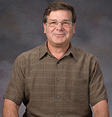Optical Beams with Spatially Variable Polarization
Hosted By: Polarization Management and Propagation Technical Group
05 May 2017 0:00 - 0:00
Eastern Time (US & Canada) (UTC -05:00)In this webinar hosted by the OSA Polarization Technical Group, Dr. Enrique J. Galvez of Colgate University will be presenting his talk on optical beams with spatially variable polarization. The discovery of the orbital angular momentum of light beams in 1992 has led to intense work on the manipulation of the optical modes of light beams. In recent years there has been increasing interest to add polarization to this effort, reviving early work on vector beams, and leading more recently to Poincare’ beams. The latter are beams that have spatially variable polarization but which contain a mapping of all the states in the Poincare’ sphere onto the transverse mode of the light.
The efforts on polarization have reinforced the modal work involving optical vortices or singular points of phase, and extending it to polarization singularities, all now viewed under a new larger topic of singular optics. The polarization may also vary along the third dimension, where one can find knots in the singular lines and Mobius strips or twisted ribbons in the vectorial oscillations of the field. The patterns that can be encoded in light beams inform us about the fundamentals of disclinations, or dislocations in the rotational order, which are ubiquitous in nature, such as in crystals, magnetism and topological surfaces and materials. These patterns have also been used to encode information in the light.
What You Will Learn:
- Optical vortices, singular points of phase, polarization singularities, Mobius strips or twisted ribbons in the vectorial oscillations of the field
Who Should Attend:
- Anyone with some background in E&M who wants to learn about polarization singularities
Presenter
Enrique J. Galvez

Prof. Enrique “Kiko” Galvez received a PhD in physics from the University of Notre Dame, and previously a B.S. from the Catholic University of Peru. He has been at Colgate University since 1988, where he is now the Charles A. Dana Professor of Physics and Astronomy. He has published actively with undergraduates and coauthored three textbooks. His research includes studies of complex light beams, singular optics and hyper-entangled states of light. He also develops educational materials and laboratories for understanding the fundamentals of light.
